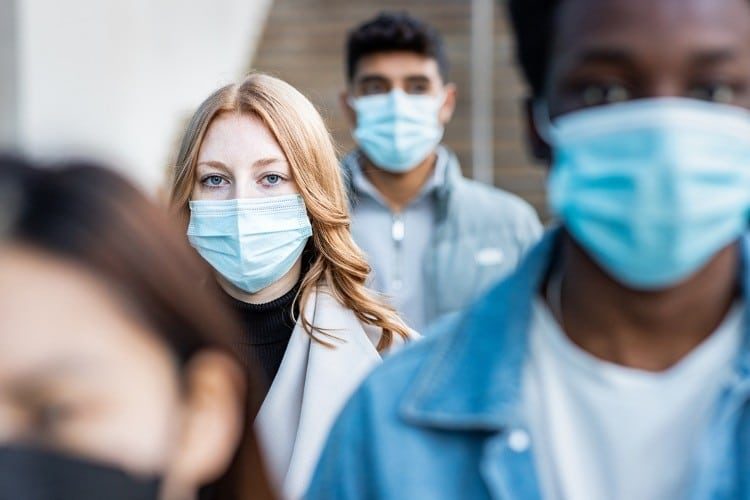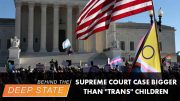
A Florida grand jury released an interim report Friday finding that lockdowns, mask mandates, and other nonpharmaceutical interventions (NPIs) supposedly designed to mitigate the spread of Covid-19 not only failed to do so but had — and continue to have — significant “collateral consequences.”
Moreover, “these NPIs were not administered based on the best available scientific data,” reads the report. “In fact, many public health recommendations and their attendant mandates departed significantly from scientific research that was contemporaneously available to everyone: Individuals, scientists, corporations and governments alike.”
In December 2022, the Florida Supreme Court, at the request of Governor Ron DeSantis, impaneled a statewide grand jury to investigate potential wrongdoing by “pharmaceutical manufacturers … and other medical associations or organizations” with respect to their involvement in the Covid-19 vaccines.
Keenly aware that its detractors would paint it as a DeSantis tool, the grand jury pointed out that, “by design,” neither DeSantis nor the Florida Supreme Court has had any involvement with the panel’s operations or conclusions. Furthermore, the members of the grand jury “were selected at random” and thus feature a great diversity of races, ages, and political opinions.
In the course of its ongoing investigation, the grand jury heard testimony from “numerous doctors, professors and scientists with a broad range of viewpoints.” Tellingly, despite requests from the panel, not one federal agency sent anyone to present its side of the story, and federal law prohibits the jury from compelling testimony from Uncle Sam’s minions.
The report first examines the government’s presentation of the risks of Covid-19 and finds it sorely lacking. Officials and their media allies frequently made statements suggesting that Covid-19 was of equal danger to everyone and that hospitalization and death rates related to the virus were quite high. In reality, of course, “age … turns out to be by far the most important factor when it comes to the risk of death from SARS-CoV-2 infection,” with only the elderly at any real risk. Furthermore, the numbers used to suggest high hospitalization and death rates were highly suspect, failing to account for asymptomatic individuals and counting those who died with Covid as if they had died from it.
Next the grand jury considered lockdowns: Did they work, and what were their side effects?
“One of the most profound problems with lockdowns,” the jury wrote, is that “our society is simply not organized in a way that could support long-term isolation.” This was well-known long before the appearance of Covid-19, as the panel showed by citing various studies and statements by public-health officials who, for no immediately apparent reason, turned on a dime and began recommending lockdowns anyway.
Given that it was already known that lockdowns would fail, what of their consequences? The grand jury had this to say:
A government-mandated lockdown is like a credit card: It allows leaders to buy a period of depressed case growth, but that benefit is temporary and ends when the lockdown is lifted. The “interest” of this benefit — written in the language of excess mortality — is paid for in future months and years of economic hardship, mental & physical health consequences, and loss of educational attainment.
…It is clear to this Grand Jury that whatever benefits inured from these mandates, they were not worth the price.
Masking and social distancing fare no better when examined under the grand jury’s microscope. Both ideas were based on little to no science yet were pushed by the public-health establishment — many members of which had previously, and correctly, pooh-poohed them — as if they were as certain as the law of gravity.
The Centers for Disease Control and Prevention (CDC) based its masking recommendations on several fatally flawed studies, including one that “proved” masks worked by testing their effectiveness on CPR dummies. Eventually, even the CDC’s own journal admitted that its studies’ conclusions “were most often unsupported by the data,” raising “concern about the reliability of the journal for informing health policy.”
Meanwhile, the fact that Covid-19 was transmitted by aerosols “never came to significantly inform public health science communication” even though “the earliest research papers discussing it” were published “around mid-2020,” noted the grand jury. “People should have been told that masks, like any protective device, have limitations.” They should have understood the “minimal utility” of plastic shields used in restaurants and stores. And they should have been advised to act accordingly.
As for social distancing, the science behind it was practically nonexistent. Besides, observed the panel, “when one is dealing with an aerosol, the primary concern is not the distance between people, it is whether one is dealing with an interior or exterior space, and, in an interior space, whether there is sufficient air filtration to prevent the accumulation of aerosol clouds containing SARS-CoV-2 virus.” Yet lockdowns, in particular, acted to confine people to interior spaces where they were most likely to transmit the virus.
“Institutional public health experts had this science at their disposal but continued to stick to advice that bore only a cursory resemblance to the contrary scientific evidence presented in the emerging data,” says the report. “That, coupled with heavy-handed directives from state and local actors, essentially turned scientific inquiry — the very basis of which is asking questions and doubting priors — into a form of civil disobedience.”
The grand jury has a long way to go in its probe. Let us hope that it continues doggedly to pursue — and proclaim — the truth.



